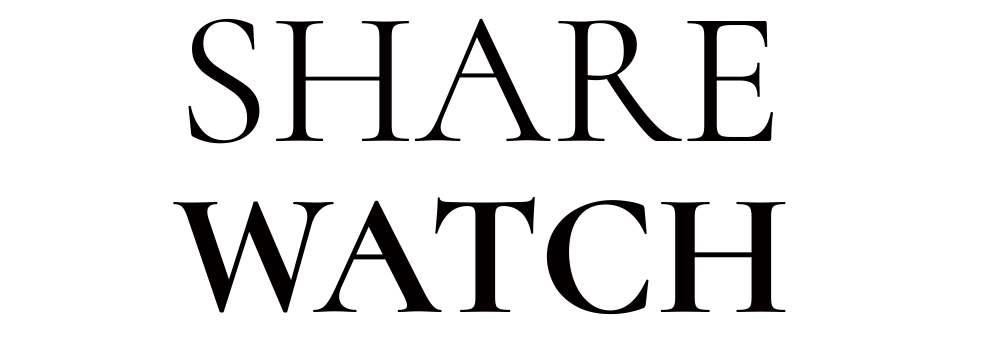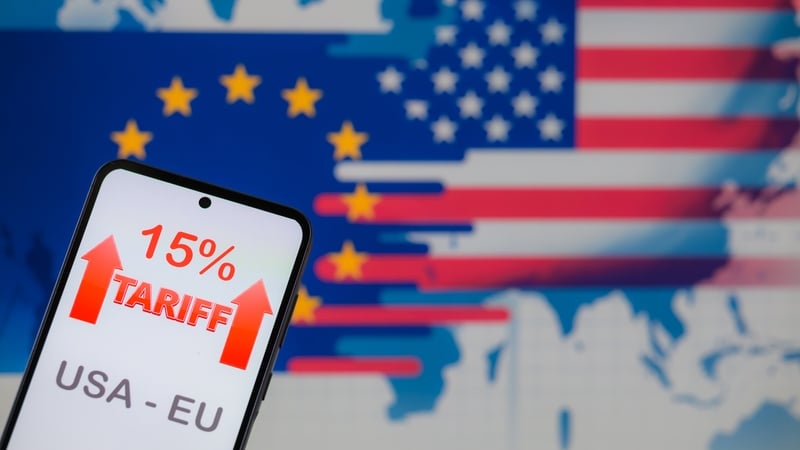After months of negotiations, on again-off again tariffs, delayed implementation dates and threatened higher levies, Donald Trump’s 15% tariff on most imports from the EU to the US took effect at midnight on Thursday.
It means many Irish products being exported to the US now face a tariff of 15% with, so far, very few exemptions.
The US President and European Commission President Ursula von der Leyen announced two weeks ago that the US and EU have agreed on a major tariff and trade deal.
They announced the 15% rate, but the finer details have yet to be published as trade talks are ongoing, and the EU suspended retaliatory measures.
Businesses are now waiting on this joint declaration, a final written trade agreement between the European Union and the United States to be published.
Since April a baseline tariff of 10% had been in effect, this has now risen to 15%, which is better than a threatened 30%, although its still not good for businesses.
Exporters and manufacturers in some sectors are still waiting on whether this rate will stick, or if it could change and when.
What do we have clarity on?
The EU’s trade and tariff deal with the US has stabilised on a single 15% tariff rate for most EU exports.
This rate applies across most sectors, including cars, semiconductors and pharmaceuticals.
According to Ms von der Leyen, this 15% is a “clear ceiling” with “no stacking” and is “all-inclusive”.
“It gives much-needed clarity for our citizens and businesses. This is absolutely crucial,” she said.
There are certain exemptions to the 15% baseline, where zero-for-zero tariffs on several strategic products have been agreed.
This includes all aircraft and component parts, certain chemicals, certain generics, semiconductor equipment, certain agricultural products, natural resources and critical raw materials.
Where is there uncertainty?
The EU is hoping that now that a framework is in place, there will be space to exempt more areas from tariffs in the future, but it’s unclear when that might be.
Some key elements, of the deal, particularly of interest to Irish exporters, still have to be negotiated.
This includes what it will mean for the EU’s dairy and spirits sector.
On sectoral carve-outs, Tánaiste Simon Harris said the Government “very much wants to see zero-for-zero when it comes to the spirits industry.”
Approximately 95% of whiskey produced here goes abroad, with the vast majority going to the US.
Irish whiskey, Irish cream and Irish drinks are protected under a geographical indication which means they must be made on the island of Ireland, production can’t move to avoid a tariff, according to Irish Whiskey Association Director Eoin Ó Catháin.
“Until we see the exact wording of this joint declaration, which is to come from the EU and the US and until we understand exactly what exemptions are included as part of that agreement, we won’t know for certain where spirits drinks or the indeed the Irish drinks industry as a whole will fall as part of this agreement,” said Mr Ó Catháin.
“As long as there’s uncertainty, that does cause a lot of difficulties for exporters and for businesses who are hoping to grow.”
Last year Ireland exported almost €2 billion worth of agri-food produce to the US.
So aside from spirits, dairy and agri food producers are still waiting for clarity on the potential for ‘zero-for-zero’ tariffs for certain agricultural products.
The dairy industry is also highlighting broader implications for a tariff border on the island of Ireland.
Pharmaceuticals which had previously been exempt from the 10% baseline tariff are now subject to the 15% rate.
On Tuesday, just nine days after he personally agreed to a 15% EU-US tariffs deal, President Trump said in relation to the pharmaceutical sector this figure relates to “one year, one-and-a-half years maximum”.
The US President also said “it’s (the pharmaceutical tariff) going to go to 150%, and then it’s going to go to 250% because we want pharmaceuticals made in our country,” before specifically referencing pharmaceutical firms based in China and Ireland.
This threat is coupled with uncertainty regarding the outcome of the US Department of Commerce’s investigation under s232 of the Trade Expansion Act which is evaluating imports of pharmaceutical products.
The EU said the 15% ceiling is clear and “all-inclusive”, but there is still a question over the stability of that rate for pharmaceuticals.
Mr Trump also announced a 100% levy on imported chips this week but said it will not apply to companies that are manufacturing in the US or have committed to do so.
This means Apple and its 6,000 Irish employees would not be affected, after the tech giant committed to investing an additional $100 billion in its home market in the US.
This announcement at the Oval Office was not a formal tariff announcement meaning it’s unclear if Ireland and other Irish chip exporters will be impacted.
What about tariffs across the island of Ireland?
Two weeks since the deal was announced, this remains another area of uncertainty for businesses.
Some sectors are calling for clarity on whether exports to the US from Northern Ireland (NI) will be treated differently to exports from the Republic of Ireland (ROI).
The tariff for goods from the ROI is 15%, but the UK US trade deal agreed a 10% baseline tariff, which applies to NI.
Dairy Industry Ireland pointed out that the dairy industry operates on an all-island basis, with integrated supply chains and cross border trade in raw milk, ingredients, and finished products.
It said any divergence in these tariffs could create huge issues and added cost for processors and farmers.
The UK-US trade deal also contains a commitment to negotiate significantly preferential treatment for UK pharmaceutical products, contingent on the outcome of the s232 investigation, without clarity on a similar commitment for the EU.
The difference in rates across the island could create a complicated situation and pose challenges for the post Brexit agreement, the Windsor Framework.

How have businesses been reacting?
Many companies are working together to figure out how to navigate the tariffs, what it will mean for supply chains, increased costs, exploring new markets and avoiding laying people off.
The Advanced Technologies in Manufacturing Cluster (ATIM) in the midlands comprises of over 70 members spanning engineering, polymer, food and drink, medical devices, and technology solutions.
Some companies have been hit more than others depending on where their main exporting base was, according to ATIM Manager Caitriona Mordan.
“I know for example one company within the spirits side, they would have been historically an Irish brand, and they have tried to mitigate against some of those tariffs, even with the 10%, but they have now relocated to the US,” said Ms Mordan.
She noted that some of the main issues they’re actively working on include progressing trade in new markets such as Canada, and other less traditional markets like the Middle East and South America, company restructuring, how to mitigate losses and manage tight margins as well as avoiding having to lay off staff.
“Things are certainly slowing down, but I think Irish companies are resilient. They do need financial supports from government as well as those supports for market discovery to new markets as well,” explained Ms Mordan.
“Mullingar is steeped in Irish owned, indigenous manufacturing companies, which is a rarity.
“But if you begin to get that ripple where you’re laying people off, it has huge impact on the wider economies that we’re trying to really bolster as well, and that’s ultimately detrimental.
“So, we’re really trying to work with them and it’s that peer-to-peer piece of how we’re supporting each other, how we’re tapping into new markets and how they’re learning.”
Neill McDonnell, CEO Irish Small and Medium Enterprises Association, said: “Uncertainty is actually the killer of business confidence and business plans.”
“In an environment where you can’t say with a degree of certainty what the cost base on your side and the buyer’s side is going to look like in the medium term, it’s impossible to borrow money, for example.”




